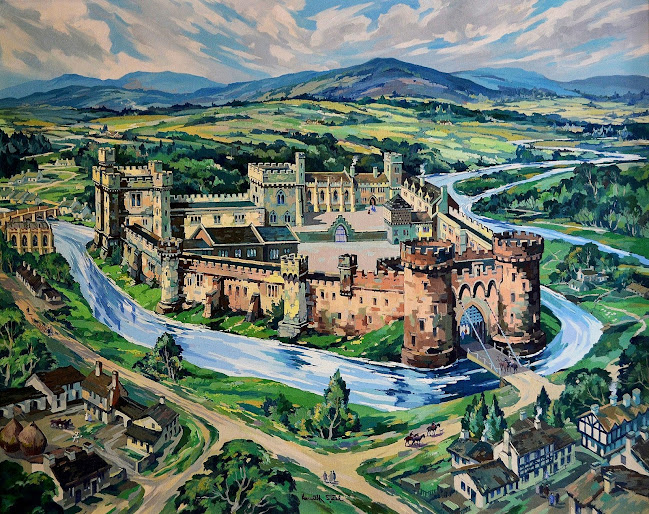from Going Gently https://ift.tt/5EWdC7e
Tebe Poem (Dmitry Bortniansky)
from Going Gently https://ift.tt/5EWdC7e
Love With No Place To Go
from Going Gently https://ift.tt/OSzDUQ6
Hide
Facing the fear
That has consumed me
And spit me out
For all the world
To see
Is not my proudest moment
The anxiety has returned
I can’t lie
Confronting it
Rather than hiding it
from R's rue https://ift.tt/RecyBku
Castle
This city, Sheffield, is known in England as The Steel City. Not only was it the kingdom's biggest producer of heavy steels for industry and construction, it was also famous for the manufacture of steel cutlery. Even today, the city's ice hockey team is known as The Steelers and Sheffield United football club are nicknamed The Blades. Good quality cutlery is still produced here but heavy steel production has almost gone.
I could make a whole blogpost about Sheffield's steel industry but I want to write about something else today - Sheffield Castle which existed long before the burgeoning of the steel industry.
There are around four thousand old castles in England. Some are in a fine state of repair but many are in ruins. Some are just mounds with moats around them and others, like Sheffield Castle, were razed to the ground leaving little evidence of their existence behind.
It was a big and strategically important castle, covering some four acres at the confluence of two rivers - The Sheaf and The Don. It began its life as a simple "motte and bailey" castle soon after the Norman invasion in 1066 but by medieval times it had grown into a huge stone stronghold with residential buildings and barracks within. It was the very gateway to the north of England.
Mary Queen of Scots was detained there in the late sixteenth century and at Manor Lodge in nearby forested hunting grounds. However, less than a hundred years later, the castle was no more. Having accommodated Royalist forces during The English Civil War, Parliament in London decided that the great fortress should be razed to the ground and that process began in earnest in 1649.
Within a few months, six hundred years of history was almost obliterated. I say "almost" because some of the castle's foundations remain to this day and following the demolition of several city centre buildings - including The Castle Market - archaeologists have scoured the castle site finding many fascinating objects and learning more about the castle's development since the Norman mound was first raised up above the two rivers.
It is tantalising to think that Sheffield Castle would have been a tourist attraction today and it would also have reminded Sheffielders that their city has a history that goes back much further than the age of steel. Co-incidentally the imagined Sheffield Castle at the top of this post was portrayed by the late Kenneth Steel (1906-1970) - a native Sheffield artist.
from Yorkshire Pudding https://ift.tt/yiqkaIZ


